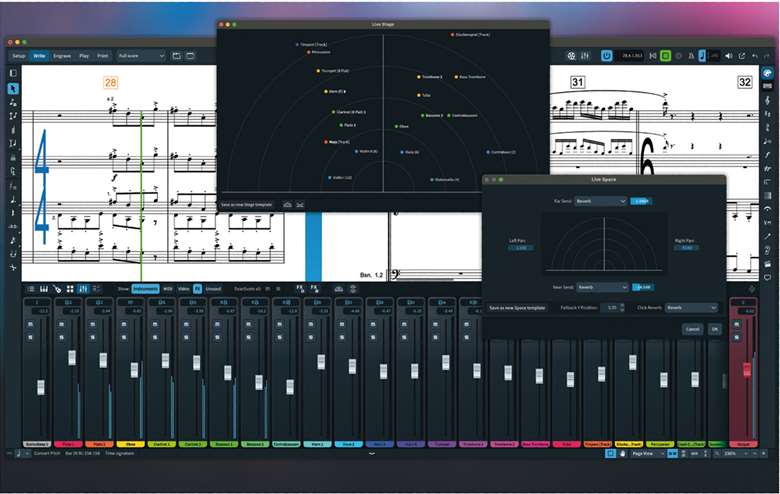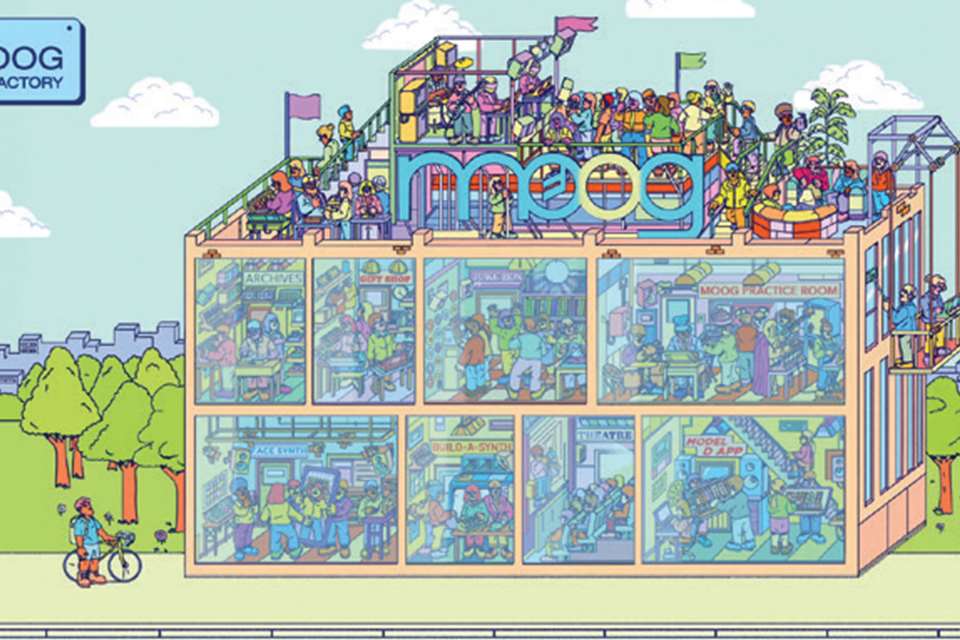Tech Reviews: Dorico Pro 5
Kate Rounding
Wednesday, July 19, 2023
Kate Rounding reviews Dorico Pro 5, stating that 'a host of minor enhancements collectively contribute to an improved user-experience'.

Steinberg
Music notation software is essential for printing scores and lead-sheets, producing handouts, exercises and worksheets, and submitting work to examining boards. It is also great for supporting the teaching of composition and to connect theory with music-making; for example, identifying and naming notes, constructing chords and melodies, and learning about phrasing, structure and appropriate instrumentation.
When it comes to software, Dorico, by Steinberg, has consistently been at the forefront of innovation. With the release of Dorico 5, this powerful tool takes another leap forward, introducing new features and enhancements that make Dorico an excellent classroom resource. While Dorico Pro 5 boasts incredible features for advanced music professionals, the range of tools and functions available in Dorico SE, iPad and Elements offer a comprehensive yet free (or affordable) music notation program.
Dorico Pro 5: new features
It is no exaggeration to say that Dorico Pro 5 offers an extensive array of new features and improvements. These range from enhanced playback capabilities to more options for presenting and printing your music. Key additions include an expanded sound library, improved audio playback, and the inclusion of a dedicated drum machine: Groove Agent SE. Numerous improvements make it more effcient, including live note-editing using the mouse; automatically condensed conductor scores; smart linked cues; and multi-selection input. Pro 5 also introduces a powerful instrument editor with tools to customise instrument libraries. There is a host of more minor enhancements that collectively contribute to an improved user-experience.
Dorico 5 SE and Dorico 5 iPad
The free SE version, once limited to writing for two players, has been expanded to accommodate up to eight players. This update allows you to explore a broader range of ensembles, from quartets to rock bands, without additional cost. Most of the available notation software for iPad is subscription based, but you can access Dorico 5 completely free from the app store. If you sign up for a free Steinberg account, you will get four additional players on the iPad, bringing the total to twelve; you only need to sign up once. You can then log in on all your iPads.
Dorico 5 Elements
Dorico Elements serves as the middle-tier version for those seeking more advanced features, and you can now write for unlimited players. Priced at £57 (for an educational licence), it provides a comprehensive set of tools, including enhanced customisation options and a wealth of playback features. For many musicians, Dorico Elements will have everything needed to create complete compositions. For teachers and students, it has everything needed to meet the requirements of GCSE courses, making it a cost-effective solution. Dorico's compatibility with various operating systems, including Mac, PC and iPad, makes it accessible to more students.
Stage and Space templates
While the primary function of a music notation program is to produce printed music that looks great, Dorico 5 also sounds beautiful ‘out of the box’. In addition to a sound library with over 1,300 realistic instrument sounds, Dorico 5 introduces the Stage and Space templates feature, which simulates the spatial placement of instruments in an orchestra or ensemble. Dorico automatically sets pan (left and right placement) and reverb (simulating distance) to create an authentic and immersive sonic environment. Stage templates are applied by default but can be customised to match specific ensemble configurations (e.g. Baroque Orchestra or Jazz Band), making them a helpful teaching aid to demonstrate the arrangement of instruments in different settings.
Pitch contour emphasis
Further improvements to the playback of music include the introduction of ‘Pitch Contour Emphasis’. Previously, Dorico ‘humanised’ music by stressing the beats that players typically accent. Pitch Contour Emphasis now analyses the shape and direction of the whole piece of music. It adds a subtle human touch to the playback to reflect the natural nuances and the melodic flow. This means that the compositions created in Dorico will automatically sound more realistic and expressive.
Groove Agent SE
Dorico 5 (Elements and Pro) introduces Groove Agent SE, a versatile drum machine with over 400 drum patterns. Unlike the previous drum options in Dorico, Groove Agent ofiers a graphical interface allowing you to see your chosen drum-kit and experiment with the individual parts. Upon opening Groove Agent, the default setting is the ‘Life is Simple’ drum-kit. The Groove Agent ofiers a variety of patterns, presented as 16 buttons you can tap to hear the corresponding sounds. Each button is conveniently labelled and colour-coded to quickly see which button is an intro (green), main (yellow), fill (blue) or ending (red). One of the standout advantages of the Groove Agent is its ability to speed up the process of creating drum parts by using these patterns.
MIDI Trigger Regions
Dorico 5 ofiers several ways to utilise the Groove Agent patterns. Firstly, you can drag your chosen drum pattern onto the track overview in Play mode or onto the percussion editor in Write mode. The pattern will follow the tempo of the piece and will be automatically notated. Secondly, you can use the new MIDI Trigger Regions option to trigger the pads in Groove Agent, playing a note or chord that doesn't appear in the score. In many notation software programs, slashes will result in silence once the notated bars have been played. Dorico 5 addresses this issue and ensures continuous playback.
The pattern played is denoted by entering the corresponding note (e.g. C#0) on each drum pad in your score. Dorico 5 will play the corresponding pattern, while the notation for drummers will show slashes to indicate continued play. This allows you to notate a part for examination purposes while providing correct playback for audio submissions to examining boards. Groove Agent is currently unavailable on the iPad version, but there are plenty of other drum-kits and plug-ins included, many of which are compatible with the iPad's touchscreen capabilities.
Live editing
Other improvements include the introduction of ‘live editing’ capabilities. You can now use the mouse to select, click and drag notes to new positions, making the manipulation of musical elements and the editing process more efficient. For example, you can drag notes to difierent pitches, bars or beats, copy whole sections, and even drag to other instruments. A faded notehead appears as you move selected notes, enabling you to see where you're moving it to. You can hear the changes in pitch as you move the notes – this can be helpful when searching for that one note that doesn't quite work, and will feel more intuitive for those used to using the mouse to edit in a DAW.
 Groove Agent
Groove Agent
Scrub playback
Scrub playback is a new feature that allows you to glide your mouse pointer across the music, causing all the notes playing at that position to sustain until you move to the next position. This proves useful for tasks such as checking harmonies, identifying voicings and locating incorrect notes. To enable Scrub playback click the new button on the toolbar or select in the transport window.
Engrave mode
The improved Engrave mode enables the customisation of score presentation elements, such as background and border colours, making teaching materials visually appealing. The software also supports the seamless import and export of files, with improved Music XML translation and additional font choices. These features are especially useful when importing work from other programs.
Resources and support
Dorico.com/resources offers tutorials and guides to help users get started and explore the software's features. There is a practical ‘First Steps’ guide, and the ‘Getting Started’ guide is a structured resource that can be used to support students with learning the software. In addition there is a handy reference guide with all the available keyboard shortcuts; this is available as a downloadable poster. The Dorico SE playlist on YouTube caters to free version users, providing step-by-step support. Whether learning how to use the new Stage Space templates or discovering advanced engraving techniques, the resources on Dorico's website cater to users of all versions and skill levels.
Pricing
-
Dorico SE 5 is free to download from www.steinberg.net/dorico/se
-
Dorico for iPad is free to download from the App Store
-
Dorico Elements 5, a single educational licence is £57
-
Dorico 5 Pro is £308, and crossgrade from Finale or Sibelius £153.00. Multi-seat options and crossgrades are available from steinberg.net/education/shop
-
If you activated a Dorico licence on or after 01/04/23, you are eligible for a free update to Dorico 5.
Find a helpful glossary of terms used in our music tech reviews here.









